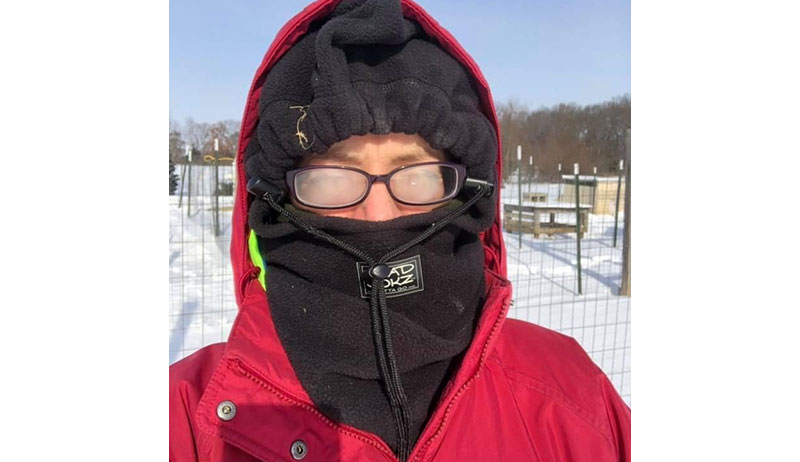
In years past, I’ve written numerous articles about how to care for your chickens during the frigid winter months, how to prevent frostbite, how to prepare your chicken coop for winter, how to help cold-injured chickens and so on. This morning, as I looked out at the blanket of snow and saw the 1-degree reading on the thermostat, it dawned on me that I’ve never covered essentials for those of us who keep flocks in states that see below-freezing (and below-0) weather.
If you are thinking about keeping chickens in snowy states, or if you already do, consider one—or all—of the following winter must-haves.
Winter Work Gloves with Hand-Warmer Pockets
Proper hand protection is quite possibly the most important essential you will need during the winter as a poultry-keeper. The work gloves we wear during the rest of the year simply don’t protect against the biting cold. They can lead to frostbite if relied upon.
Similarly, standard winter gloves and mittens are too bulky to be of use in the barnyard, chicken coop or run. I discovered this firsthand my first winter keeping chickens.
Wearing my trusty work gloves led to a good half hour of unforgettable pain as the feeling and circulation returned to my thawing fingers. Using my ski gloves kept my fingers warm, yes. But their bulk made it close to impossible to use my hands.
Get your chores done and keep your hands agile by wearing a pair of winter-grade work gloves. You’ll find plenty of options on the farm-store shelf. But be sure to get the kind that are waterproof—because waterers slosh and ice melts—and that have a built-in, battery-operated heater or a pocket in which to tuck a hand warmer.
Read more: It’s cold! Here are 6 tips for getting through winter as a chicken-keeper.
Insulated Winter Work Boots
Toes are just as susceptible to frostbite as fingers are … more so, since they aren’t as easily accessible as fingers. You can wear the boots you use for winter recreation while you do your chicken chores, but it’s not advisable. They will get muddy and soiled with chicken droppings.
It’s always best to have a pair of winter boots designated for the coop and run, especially since disposable boot covers don’t work well with snow. Make certain that the boots you buy cover your calves and are waterproof to protect against muddy splashes and melt puddles.
Personally, I suggest insulated boots with a large toe box. These offer more protection against the chill and have space for thick winter socks or a toe-warmer packet.
I’ve found that winter hunting boots do an excellent job in the winter run. These are usually insulated, accommodate winter socks and can be hosed down easily to clean.
Proper Head Covering
No, the hood on your winter coat does not provide your head with sufficient protection from the elements. I know quite a few chicken farmers who feel this often-forgotten attachment will suffice. It doesn’t.
Hoods are designed to be roomy (not close fitting), and they will fall off or get blown off just when you need their warmth the most. A few poultry keepers I know try to brave the weather by wrapping a scarf around their neck and ears. If you’ve ever tried this, you know that, after a few dozen steps, the scarf tends to fall away from your ears. This leaves you with a toasty neck but frozen lobes.
Earmuffs are an option. But I’ve found these often apply too much pressure to your head, causing headaches.
For me, and hopefully for you, the best solution is what’s called a trapper, or lumberjack, hat. These amazing head coverings are typically thermal and lined with faux fur for extra warmth. In addition, they have ear flaps that completely cover your ears, preventing exposure to the wind and chill.
Often, trapper hats have chin straps attached to the ear flaps. The fuzzy warmth protects not just your ears but also the sides of your face.
On relatively warmer days, the flaps can be buckled across the top of your head so that you don’t overheat. Trapper hats are so warm and cozy you may want to get one for your chicken chores and one to wear when you go out and about during the winter.
Read more: Check out these 16 tips for surviving—and thriving—during winter on the farm.
Polarized Sunglasses
Sunlight reflecting off the snow can be blinding—and it can be painful, especially if you have to spend a lot of time outdoors.
Protect your eyes with a pair of polarized sunglasses that reduce that intense winter glare. Polarized sunglasses will allow you to see what you’re doing. They will also shield your eyes from gusts of wind and blowing snow.
Look for the kind that are shatterproof, since slipping on ice is also a winter hazard. Take note: Sunglasses that block UV light are not necessarily polarized. Be sure to check the labeling should you want a pair of sunglasses that does both. If you wear glasses for vision, check with your optometrist about adding a pair of prescription polarized glasses.
A Sturdy 5-Gallon Bucket
You may already have one or more of these around your garage, garden shed or coop. If you don’t—or if yours has been used to hold any kind of chemicals, including paint—buy at least one and mark it “FOR CHICKENS ONLY.”
Keep this bucket lidded to prevent dust from accumulating within and store it not in your garage, shed or coop, but close to your kitchen or your utility basin.
You’ll need easy access to this bucket on the days that your outdoor water faucet freezes in order to carry fresh water out to your birds. Lugging water out to the coops is almost an everyday occurrence during the northern winter and is more economical than buying a second set of waterers to swap back and forth.




